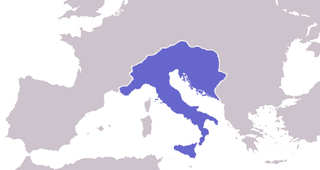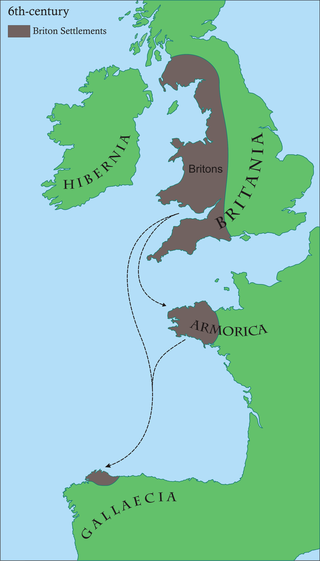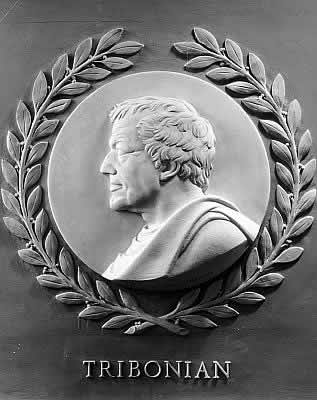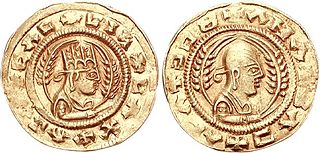
Theodoricthe Great, also called Theodoric the Amal, was king of the Ostrogoths (475–526), and ruler of the independent Ostrogothic Kingdom of Italy between 493 and 526, regent of the Visigoths (511–526), and a patrician of the Eastern Roman Empire. As ruler of the combined Gothic realms, Theodoric controlled an empire stretching from the Atlantic Ocean to the Adriatic Sea. Though Theodoric himself only used the title 'king' (rex), some scholars characterize him as a Western Roman Emperor in all but name, since he ruled a large part of the former Western Roman Empire described as a Res Publica, had received the former Western imperial regalia from Constantinople in 497 which he used, was referred to by the imperial title princeps by the Italian aristocracy and exercised imperial powers recognized in the East, such as naming consuls.
The 500s decade ran from January 1, 500, to December 31, 509.
The 510s decade ran from January 1, 510, to December 31, 519.
The 520s decade ran from January 1, 520, to December 31, 529.
The 480s decade ran from January 1, 480, to December 31, 489.

Year 493 (CDXCIII) was a common year starting on Friday of the Julian calendar. At the time, it was known as the Year of the Consulship of Albinus and Eusebius. The denomination 493 for this year has been used since the early medieval period, when the Anno Domini calendar era became the prevalent method in Europe for naming years.

Year 500 (D) was a leap year starting on Saturday of the Julian calendar. At the time, it was known as the Year of the Consulship of Patricius and Hypatius. The denomination 500 for this year has been used since the early medieval period, when the Anno Domini calendar era became the prevalent method in Europe for naming years. The year 500 AD is considered the beginning of the Middle Ages, approximately.

Year 510 (DX) was a common year starting on Friday of the Julian calendar. In the Roman Empire, it was known as the Year of the Consulship of Severinus without colleague. The denomination 510 for this year has been used since the early medieval period, when the Anno Domini calendar era became the prevalent method in Europe for naming years.
Year 524 (DXXIV) was a leap year starting on Monday on the Julian calendar. In the Roman Empire, it was known as the Year of the Consulship of Iustinus and Opilio. The denomination 524 for this year has been used since the early medieval period, when the Anno Domini calendar era became the prevalent method in Europe for naming years.
Year 525 (DXXV) was a common year starting on Wednesday of the Julian calendar. At the time, it was known as the Year of the Consulship of Probus and Philoxenus. The denomination 525 for this year has been used since the early medieval period, when the Anno Domini calendar era became the prevalent method in Europe for naming years. In this year, the monk Dionysius Exiguus proposed a calendar starting with the birth of Jesus, so this was the first time the year was designated AD. However, the system was not used in general until the reign of Charlemagne in the 9th century.

Year 530 (DXXX) was a common year starting on Tuesday of the Julian calendar. In the Roman Empire, it was known as the Year of the Consulship of Lampadius and Probus. The denomination 530 for this year has been used since the early medieval period, when the Anno Domini calendar era became the prevalent method in Europe for naming years.
Dhū Nuwās, real name Yūsuf Asʾar Yathʾar, Yosef Nu'as, or Yūsuf ibn Sharhabil, also known as Masruq in Syriac, and Dounaas (Δουναας) in Medieval Greek, was a Jewish king of Himyar reigning between 522–530 AD who came to renown on account of his persecutions of peoples of other religions, notably Christians, living in his kingdom. He was also known as Zur'ah in the Arab traditions.

Abraha was an Aksumite military leader who controlled the Kingdom of Himyar and a large part of present-day Saudi Arabia for over 30 years in the 6th century. Originally a general in the Aksumite army that invaded Yemen around 525 CE, Abraha seized power by deposing the Christian Himyarite king installed by Kaleb. He is famous for the tradition of his attempt to destroy the Kaaba, a revered religious site in Mecca, using an army that included war elephants, an event known as Year of the Elephant.

The ancient history ofYemen or South Arabia is especially important because it is one of the oldest centers of civilization in the Near East. Its relatively fertile land and adequate rainfall in a moister climate helped sustain a stable population, a feature recognized by the ancient Greek geographer Ptolemy, who described Yemen as Eudaimon Arabia meaning Fortunate Arabia or Happy Arabia. Between the eighth century BCE and the sixth century CE, it was dominated by six main states which rivaled each other, or were allied with each other and controlled the lucrative spice trade: Saba', Ma'īn, Qatabān, Hadhramaut, Kingdom of Awsan, and the Himyarite Kingdom. Islam arrived in 630 CE and Yemen became part of the Muslim realm.
It is believed that Jews began migrating to the Arabian Peninsula in as early as the 6th century BCE, when the Babylonian conquest of Judah triggered a mass Jewish exodus from Judea in the Land of Israel. Over time and through successive exiles, the local Jewish tribes, who were concentrated in the Hejaz and partly in South Arabia, established themselves as one of the most prominent ethno-religious communities of pre-Islamic Arabia. Likewise, Judaism, which had been introduced as one of the few monotheistic religions in the region, stood as a deviation from the typical polytheistic practices of Arabian paganism. These Jewish tribes continued to have a presence in Arabia during the rise of Muhammad, who founded Islam in the 7th century CE. Muhammad's interaction with the Jewish community is documented to a considerable degree in Islamic literature, including in many ahadith. The Jewish tribes of the Hejaz are seen in Islam as having been the offspring of the Israelites/Hebrews. Two of Muhammad's wives were Jewish: Safiyya bint Huyayy and Rayhanah bint Zayd, both of whom belonged to the Banu Nadir by birth, though Rayhanah's status as a wife is disputed.

The Kingdom of Aksum also known as the Kingdom of Axum, or the Aksumite Empire, was a kingdom in East Africa and South Arabia from classical antiquity to the Middle Ages, based in what is now northern Ethiopia and Eritrea, and spanning present-day Djibouti and Sudan. Emerging from the earlier Dʿmt civilization, the kingdom was founded in the 1st century. The city of Axum served as the kingdom's capital for many centuries until it relocated to Kubar in the 9th century due to declining trade connections and recurring external invasions.

The Aksumite–Persian wars took place in the 6th century, when the Kingdom of Aksum and the Sasanian Empire fought for control over South Arabia. In the 520s, the Aksumite invasion of South Arabia had led to the annexation of the Himyarite Kingdom and the deposition of Dhu Nuwas, who was persecuting the Christian community of Najran. By 570, the subjugated Himyarite king Saif ibn Dhi Yazan sought to end Aksum's hegemony in the region and, after being rejected by the Byzantine Empire, turned to the Persians for military aid. The Persian king Khosrow I agreed upon the stipulation that Himyarite territory would be annexed by the Sasanian Empire in the event of an Aksumite defeat. Subsequently, the Persian army entered South Arabia and secured decisive victories in the Battle of Hadhramaut and then in the Siege of Sanaa, following which the Aksumites were largely expelled from the Arabian Peninsula, excluding Najran. With the establishment of Sasanian Yemen, Yazan was appointed to govern the region. However, four years into his reign, he was murdered by his Aksumite servants. Facing the return of Aksum to South Arabia, the Sasanian Empire mounted a second invasion and re-conquered Yemen by 578, indefinitely ending Aksumite rule outside of Ethiopia. The Persian army general Wahrez was appointed as Yemen's governor, ensuring the suppression of regional pro-Byzantine influence amidst the Byzantine–Sasanian War of 572–591.
Sumyafa' Ashwa al-Yazani, also known as Esimiphaios in Syriac and Greek sources, was a vassal king of Himyar, ruling in the 6th century CE under the Aksumite Empire. He was also the viceroy of the Aksumite king Kaleb, who had invaded Himyar and defeated Dhu Nuwas. Sumyafa' Ashwa was a native convert to Christianity.

The Aksumite invasion of Himyar consisted of a series of two invasions from 518 to 525 fought between the Christian Kingdom of Aksum and the Jewish Himyarite Kingdom. The wars functioned as proxy wars waged by the former on behalf of the Roman Empire during the Roman-Persian Wars with the ultimate goal of establishing an anti-Sasanid bloc in Arabia Felix.
Ma'dikarib Ya'fur also romanized as Mu'di Karab Ya'fir, was a Himyarite king who ruled in the 6th century CE. Ma'dikarib Ya'fur was an adherent to Christianity, and served as a vassal ruler over Yemen under the Aksumite Empire. His rule is only attested to in two archaeological inscriptions which date to around 521 CE.










